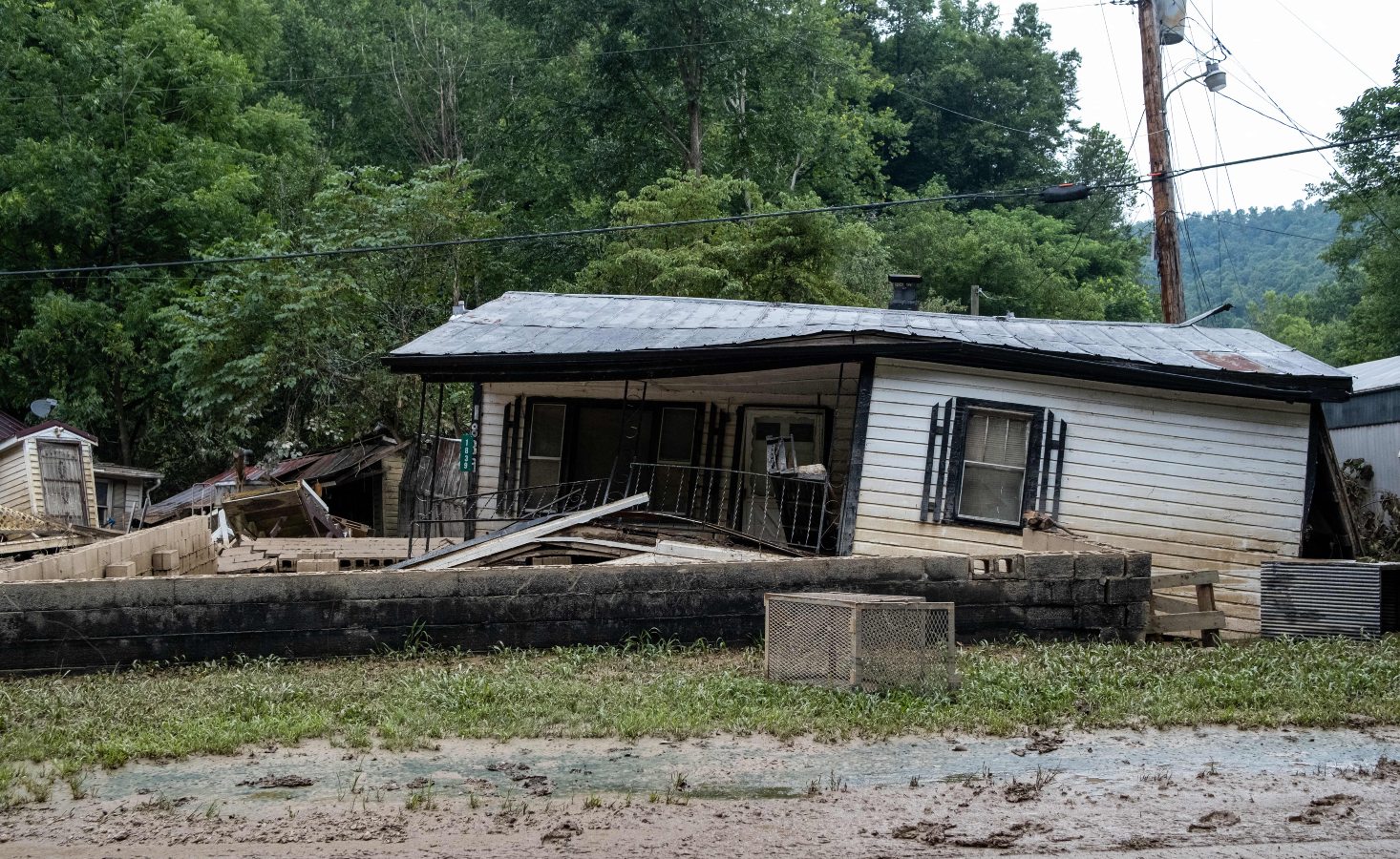Current funding is not nearly enough to rebuild the thousands of homes damaged or destroyed in last July’s historic flooding in eastern Kentucky, according to a new research analysis.
The report, released earlier this week by the Ohio River Valley Institute and the Appalachian Citizens’ Law Center, estimates the cost of renovating or rebuilding the region’s affected households could range from roughly $500 million to nearly one billion dollars, depending on how many people are relocated to less flood-prone areas. About $159 million has been raised so far by federal, state, and philanthropic sources to support local residents, the researchers found in a separate investigation.
Last July, a series of storms brought heavy rainfall to eastern Kentucky over a five-day period, causing catastrophic flooding and landslides. More than 40 people lost their lives. Roughly 9,000 households were damaged or destroyed in 13 counties across the state, according to the report. Five hundred and forty two homes were categorized as destroyed, while more than 4,500 were severely damaged.
Social justice and environmental advocates have claimed that the majority of the deaths and damage to homes from the flooding and landslides were exacerbated by the decades of geological and environmental damage caused by strip mining in the region and their proximity to the most affected areas.
The report’s researchers used Federal Emergency Management Agency, or FEMA, data on income levels of households who applied for aid, as well as the results of home assessments the agency conducted, to create two potential aid proposals for the rebuilding effort.
The first, which the researchers estimated would cost around $450 million ($150,000 per home), would only replace homes with moderate to severe damage, or those that had been destroyed, in the same location. The second proposal would replace destroyed homes and relocate them to less flood-prone areas, mitigating future flood risk. It would also use part of the funding to repair the more than 4,000 homes with moderate damage with better structural foundations. While the estimated cost, more than $950 million ($185,000 per home), is far more expensive than the first option, it would likely bring longer term protection from the economic and environmental risks of extreme weather.
“I think it’s just as challenging to do the first approach in the long run,” Eric Dixon, a senior researcher at the Ohio River Valley Institute and co-author of the report, told Grist. “Many people could potentially have to rebuild multiple times, and when you factor in the loss of life, it’s pretty clear that option B is the better option.”
Appalachian Kentucky is a region deeply indented by its narrow valleys and mountain ridges. Huge swathes of this landscape have been carved up by large mining companies who have extracted coal and other minerals for generations. Kentucky’s coal mining towns largely exist in these valleys — or hollows — while extraction sites on the high ridges above sit increasingly abandoned. But because of the isolation, there is often only one way in and out of these towns. When heavy rainfall occurs, the resulting flooding and landslides can quickly cut off these communities from outside resources. In addition, poor soil retention and lack of tree coverage on the ridges — the result of mining — means that when heavy rain hits, the water has nowhere to go but down into valley communities below.
While flooding is Kentucky’s most common and costly natural disaster, few of the small towns affected by last summer’s flooding were equipped to deal with the economic disruption and structural damage it caused. The report states that 95 percent of homeowners of damaged homes across the 13 counties lacked federal flood insurance. FEMA flood insurance costs Kentucky households around $1,000 per year, a heavy burden for many families in the state’s eastern Appalachian portion, which ranks as one of the poorest regions in the U.S.
Of the households that reported damage to their homes after the flood, 60 percent earn annual incomes of less than $30,000, according to the report, which cited FEMA aid applicant data.
As the risks to life and property from extreme flooding in eastern Kentucky will likely increase in the coming years, Dixon believes that presenting residents with a choice of how to best protect their homes, regardless of their financial status, is the only way forward.
“We lost 44 lives,” said Dixon. “If we don’t want to lose 44 more people the next time it floods in Eastern Kentucky, we need to make sure that people have the resources to make a choice to relocate to higher ground and safer areas.”



